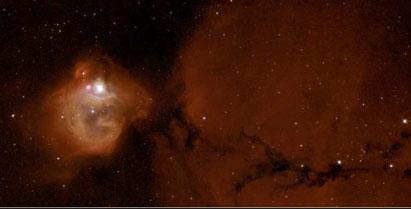Cosmic bubble

The Great Magellanic Cloud is relatively close to the Milky Way, that is, our galaxy, about 165,000 light-years away, and is visible to the naked eye in the southern hemisphere. Although most stars of the universe emerged billions of years ago, they have calculated that this group of stars appeared around 30,000 years, so from the astronomical point of view it can be said that this is a new event.
The bubble formed by the group of stars has a diameter of 25 light years and the central star of the image, N83B, is 30 times greater than the sun and 200,000 times brighter. The luminosity and the "wind" emitted by this star has released the nearby gas and created a large gap around it.
French, American and German astronomers study the structure of the nebula to understand the relationship between gas, dust and radiation. This high-definition image has allowed, for example, to see some individual stars illuminating the gas cloud.
The image has been complemented with images of three narrow filter bands from a Hubble camera. The red color corresponds to the ionized hydrogen H-alpha and represents the cold temperature, the green is of the ionized oxygen and the blue is that of the ionized hydrogen H-beta.
More information on the Internet:
Buletina
Bidali zure helbide elektronikoa eta jaso asteroko buletina zure sarrera-ontzian











